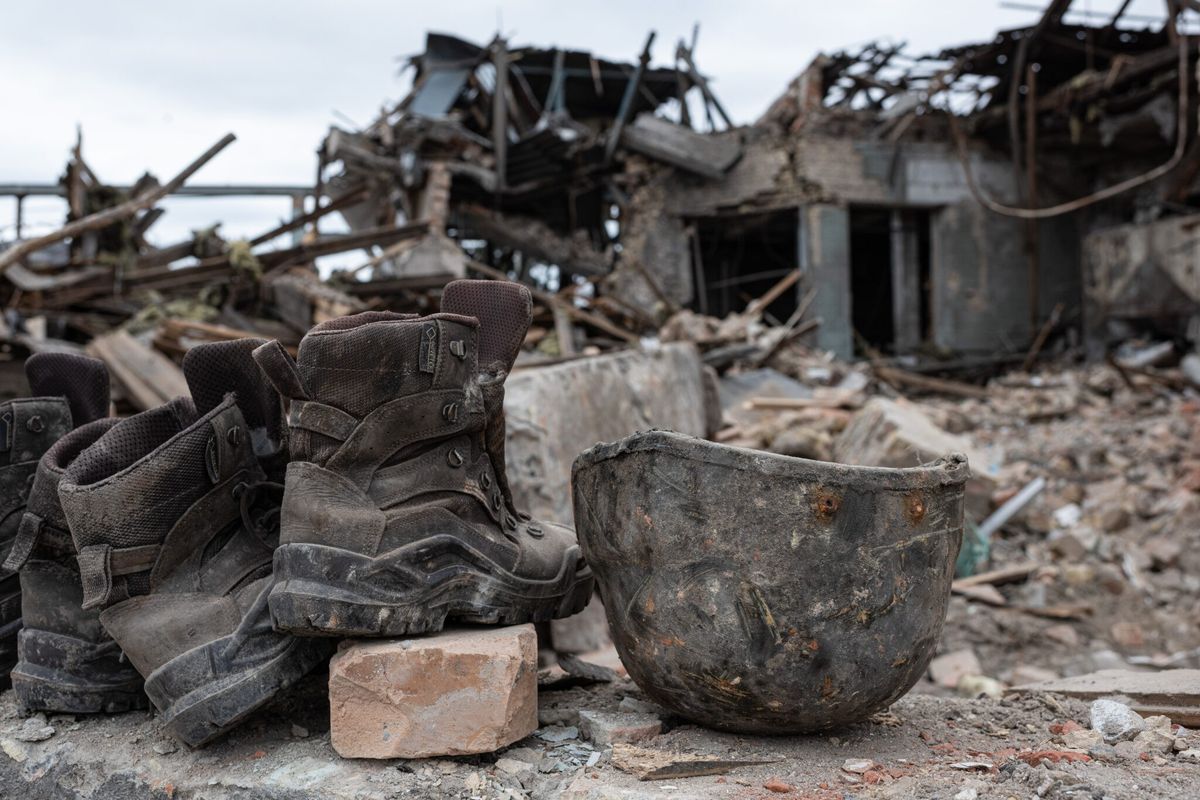Border security has been one of the most heavily debated topics in the U.S. presidential race, with most of the discussion focusing on illegal immigration. But that train of thought is not necessarily productive, explained Mike Fisher, former Chief of the United States Border Patrol, at The Cipher Brief’s monthly Georgetown Salon Series event in Washington D.C. In fact, he says, border security encompasses numerous matters far beyond the pale of illegal immigration.
Fisher explained how U.S. border security strategy shifted in the aftermath of 9/11 and then again nearly a decade later.
In 2003, the Department of Homeland Security (DHS) emphasized a crime-based approach to border security that looked at the three main aspects of crime—means, opportunity, and intent – and attempted to craft a strategy that focused on eliminating one specific link in the chain: opportunity.
“While effecting the means and intent is quite difficult, border patrol focused on the opportunity for crime to occur and therefore the strategy was primarily focused on terrain denial; in effect, deterrence, “ Fisher said.
Congress, Fisher pointed out, was initially quite helpful in funding border patrol operations and activities post 9/11. The lawmakers authorized a budget that funded increased technology, 700 miles of fence along the southern border, doubled the size of border patrol agents, and introduced for the first time the use of unmanned aerial surveillance capabilities.
However, in 2011, several factors changed. First, new pedestrian fences and vehicle barriers covering hundreds of miles, as well as new roadways giving agents more access, fortified the border. There was also an increased political interest in securing the border and an emergence of illicit networks replacing “mom and pop” smuggling organizations.
Second, the capabilities of the Border Patrol were significantly enhanced. The size of the organization doubled from 2006 to 2008. Improved technology and the use of Unmanned Aerial Surveillance improved situational awareness.
Third, the convergence of transnational organized crime and terrorists changed the strategic landscape. Border Patrol changed from a resource-based strategy to a risk-based strategy; possibility of illegal entry was replaced with the probability of illegal entry.
Today, the challenges faced by Border Patrol are multifaceted.
Terrorist Entry and Cooperation with Other Countries
The U.S. generally has a “good handle on transnational organizations and drug smugglers,” said Fisher. As for terrorists, Fisher pointed out that desolate areas along the border and underground tunnel networks, make it nearly impossible to secure every inch of American borders. That said, Fisher indicated the preferred method that terrorists use to infiltrate the U.S. is passenger airlines. “That was the main threat before 9/11 and remains the main threat today.”
Dozens of airplane passengers are denied entry into the U.S. every week due to known security concerns and exchanges of information with other countries; but unless there is a more extensive effort between the U.S. and other nations, it is difficult if not impossible, to prevent all suspects from boarding planes into the U.S., said Fisher.
He believes a more efficient and effective international system, where information, such as a complete passenger manifest is shared between countries prior to boarding, would be an extremely beneficial security upgrade.
Crime Groups’ Responses to Increased Border Security
As the U.S. improves its border security measures, illicit networks also adapt and develop more sophisticated ways of exploiting U.S. security measures.
“There used to be small smuggling groups participating in border crime, but as we hardened the border, they came up with more sophisticated ways to smuggle goods across the border,” said Fisher. Today, the nationalities of those apprehended attempting to infiltrate the border represent over 140 countries, and around 95 percent of those caught have no documentation.
“Who are these people, where do they come from, why are they coming here – for work or to do harm to this country – that’s what we need to figure out,” Fisher remarked.
Water Access
“We cannot adequately protect illegal entries from all water boundaries,” acknowledged Fisher. The difficulty in tracking small vessels along the coast as well as dwindling Coast Guard forces have contributed to the challenges the U.S. government faces.
One method employed by U.S. Customs and Border Protection (CBP) to improve security from maritime threats has been the use of radiation portal monitors to check cargo at the docks. CBP officers are oftentimes able to determine, based on advanced information and sophisticated technology, if cargo poses a threat to the U.S.
Methods for Risk Based Approach
Overall, 12 key data sets have been identified to assess the state of the border, explained Fisher. For example, the number of tons of drugs seized at the border, the average weight-per-seizure of marijuana, and the recidivism rates over time in a given area are some of the metrics taken into account. Instead of primarily tracking the number of arrests or the amount of narcotics seized, as had previously been the case, Border Patrol now gathers information that helps them understand the illicit networks as a business rather than just as a criminal enterprise: how are they organized, what are their vulnerabilities? Once that is accomplished, the ability to disrupt and ultimately dismantle these networks will be easier.
Allies Working Together
In the mid-2000s, Mexico and the United States had a good security partnership Fisher said. The two conducted joint border patrols and joint risk assessments, which led to a decrease in violence in both countries. However, as is often the case, the challenge is sustainment. Cooperation with Mexico varies with each Mexican administration.
Fisher pointed out that U.S. Border Patrol Agents work very closely with the Royal Canadian Mounted Police (RCMP) and at times are permitted to enter into Canadian waters to pursue a common threat. Currently, there are more than 2,200 authorized U.S. Border Patrol Agents along the four-thousand miles of U.S.-Canadian border.
Drug Trafficking
The tactics used by smugglers to bring drugs across the U.S. border have advanced, according to Fisher. Today, smugglers attempt to bring in drugs through deep concealment methods in vehicles, predominantly through the ports of entry or through Border Patrol Checkpoints. These compartments are designed and build in foreign countries and used to hide drugs.
Heavy traffic into the U.S. along the southern border and the economic impact of slow entry times, limits the time CPA officers have to make a final admissibility determination. The use of advanced information (such as license plate readers) and pre-primary operations (CBP officers walking through lanes with canines) reduces risk and allows the officer to balance the speed of an admission’s decision with safety and security.
Smugglers may also alter the composition of drugs so that they do not register as illegal substances if the drugs are seized. Further, Fisher believes that there is a “possibility of subterranean networks (tunnels) that have not been found” whereby drugs are being transported into the U.S.
Overall, Fisher said that border security has come a long way in the last 15 years but much work remains.
Bennett Seftel is deputy director of editorial at The Cipher Brief.












